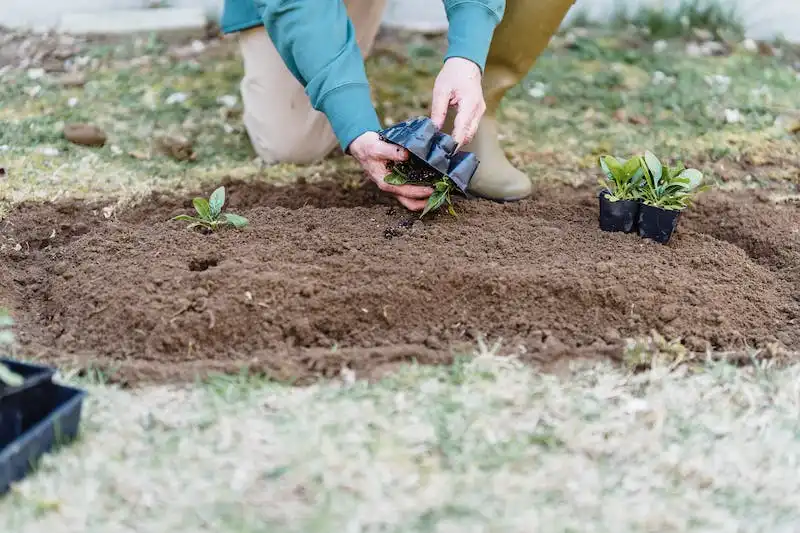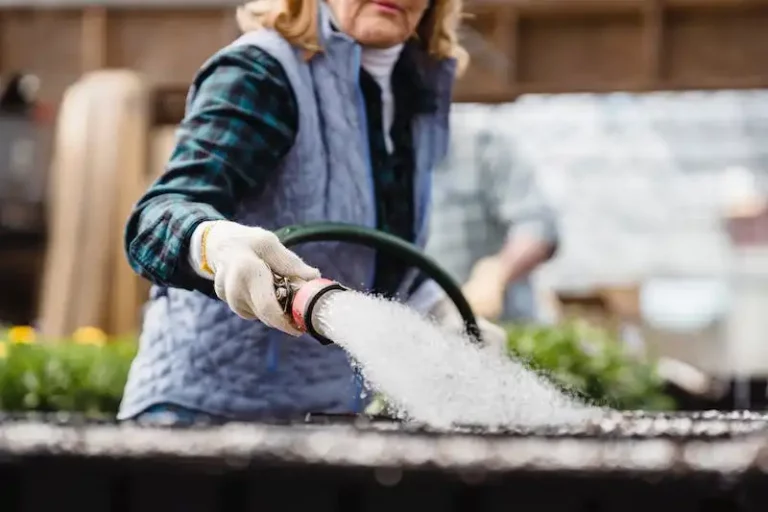Clematis is a popular flowering vine that adds charm and beauty to any garden or landscape. These stunning flowers come in a variety of colors and shapes, making them a favorite among gardeners. But when do clematis bloom? The answer to this question depends on the specific variety of clematis you have.
There are three main groups of clematis: early-blooming, repeat-blooming, and late-blooming varieties. Each group has its own unique characteristics and blooming period.
Early-blooming clematis varieties typically start blooming sometime in late spring or early summer. These varieties produce an abundance of flowers in a short period of time, usually lasting a few weeks. To ensure the health and vibrant blooms of your early-blooming clematis, it is important to provide them with proper care and maintenance.
Repeat-blooming clematis, as the name suggests, produces flowers several times throughout the growing season. These varieties typically begin blooming in early summer and continue to bloom until the first frost. To encourage repeat blooming, it is recommended to fertilize and water your plants regularly.
Late-blooming clematis varieties have a shorter blooming period, typically starting in late summer and continuing into the fall. These varieties often produce larger, showy flowers that are hard to miss. It is important to provide adequate support and regular pruning for late-blooming clematis to ensure healthy growth and abundant blooms.
Caring for clematis plants involves specific tasks such as pruning, fertilizing, and watering. Pruning is one of the most important aspects of caring for clematis, as it helps shape the plant and promotes healthy growth. Regular pruning helps remove dead or diseased stems and encourages new growth and flowering.
When it comes to fertilizing clematis, it is recommended to use a balanced fertilizer in the spring and again in the summer. This helps provide the necessary nutrients for healthy growth and abundant blooms. Additionally, proper watering is essential for clematis plants, as they prefer moist but well-drained soil.
In conclusion, the blooming period for clematis varies depending on the specific variety. Whether you have an early-blooming, repeat-blooming, or late-blooming variety, providing proper care and maintenance is key to ensuring vibrant blooms and healthy plants. By following the tips and guidelines mentioned above, you can enjoy the beauty of clematis flowers all season long.
How to Grow and Care for Clematis Leather Flower
Clematis leather flower is a beautiful climbing vine that can add a burst of color to your garden. These plants are known for their vibrant blooms and strong fragrance. If you’re interested in growing and caring for clematis leather flower, here are some tips to get you started:
- Planting: Clematis leather flower thrives in full sunlight, so choose a location that receives at least six hours of direct sunlight per day. These vines prefer to have their roots shaded, so plant a smaller perennial or groundcover in front of the clematis to provide some shade.
- Soil: Clematis leather flower prefers well-draining soil with a pH between 6 and 7. Amend your soil with organic matter, such as compost or well-rotted manure, to improve drainage and fertility.
- Watering: Keep the soil consistently moist, but not waterlogged. Water deeply once or twice a week, depending on the weather and soil conditions. Be careful not to overwater, as clematis leather flower is susceptible to root rot.
- Pruning: Prune your clematis leather flower in late winter or early spring, before new growth starts. Remove any dead or weak stems, and cut back the remaining stems to the desired shape. This will encourage new growth and increase flower production.
- Fertilizing: Feed your clematis leather flower with a balanced fertilizer in early spring. Follow the instructions on the fertilizer package for dosage and application.
- Diseases and Pests: Clematis leather flower is relatively disease-resistant, but it can be susceptible to fungal diseases in high humidity. To reduce the risk of fungal infections, avoid overhead watering and provide good air circulation around the plant.
- Judging blooming times: Depending on the variety, clematis leather flower can bloom from early summer to late fall. Some varieties have a second blooming period in late summer or early fall.
- Common problems: Clematis leather flower can sometimes be affected by wilt, a fungal disease that causes the leaves to wilt and turn brown. If you notice wilt symptoms, remove and destroy the affected leaves and stems to prevent the spread of the disease.
By following these tips, you can keep your clematis leather flower healthy and blooming all summer long. If you have any specific questions or concerns, consult with your local gardening center or horticulturist for more information.
Clematis Care
Clematis are beautiful flowering plants that bloom in a variety of colors and shapes. They are known for their vibrant blooms, which can range from small and delicate to large and showy. The time of year when Clematis bloom can vary depending on the specific variety, but generally they flower between early spring to late summer.
Caring for Clematis involves providing them with the right growing conditions, including a suitable planting location and proper watering and feeding. Here are some tips for caring for Clematis:
- Choose a planting location that receives at least six hours of sunlight per day. Clematis thrive in full sun, although some varieties can tolerate partial shade.
- Ensure that the soil is well-drained and rich in organic matter. Clematis prefer moist soil, but they don’t like to sit in waterlogged soil.
- Dig a hole that is twice the width of the root ball and at the same depth as the container or pot. Place the Clematis in the hole, cover the roots with soil, and water well.
- Water the Clematis regularly, especially during hot and dry weather. Aim to keep the soil evenly moist, but avoid overwatering, as this can cause root rot.
- Fertilize the Clematis once a month during the growing season with a balanced fertilizer. This will provide the necessary nutrients for healthy growth and abundant blooms.
- Prune the Clematis in late winter or early spring to maintain its shape and encourage new growth. Remove any dead or damaged stems, and cut back the remaining stems to a couple of buds above ground level.
- Provide support for the Clematis to grow on, such as a trellis or a fence. This will help the plant to climb and display its blooms to their full potential.
- If you live in a colder climate, protect the Clematis during winter by mulching around the base of the plant and wrapping it in burlap or a frost blanket. This will help to insulate the plant and prevent damage from freezing temperatures.
- Group Clematis together to create a striking display of different colors and varieties. By planting Clematis of various flower shapes and bloom times, you can enjoy a continuous display of blossoms throughout the growing season.
- When purchasing Clematis, choose healthy plants with well-developed root systems. Look for plants that have multiple stems and buds, as this indicates a strong and vigorous plant.
In conclusion, caring for Clematis involves providing them with the right growing conditions, including a suitable planting location, adequate sunlight, and regular watering and feeding. By following these care tips, you can enjoy a beautiful and vibrant display of Clematis blooms in your garden.
Planting
When it comes to planting Clematis, proper care is essential to encourage these beautiful vines to grow and bloom properly. The first step is choosing the right variety of Clematis. There are many different types available, including evergreen and deciduous varieties.
Once you have chosen your preferred variety, it’s time to prepare the planting site. Clematis thrive in well-drained soil with plenty of organic matter, so be sure to amend the soil with compost or other organic materials before planting. Dig a hole that is twice the diameter of the plant’s root ball, and about as deep as the root ball is tall.
When planting evergreen Clematis, it is important to protect the root system from cold temperatures. Be sure to plant in a location that offers some shelter, such as near a wall or fence. In colder climates, it is recommended to plant in early spring, once the ground begins to thaw.
For deciduous Clematis, planting can be done in either spring or fall. If planting in the spring, wait until the danger of frost has passed and the soil has warmed up. Fall planting should be done at least six weeks before the first expected frost to allow the plant to establish before winter.
When planting, place the Clematis in the hole, making sure that the root ball is level with the soil surface. Backfill the hole with soil, making sure to firm it gently around the roots. Water the plant thoroughly after planting to help settle the soil and ensure good root-to-soil contact.
Once your Clematis is planted, caring for it is relatively simple. Regular watering is important, especially during dry periods. Mulching around the base of the plant can help conserve moisture and suppress weeds. Fertilize your Clematis in early spring and again in early summer to promote healthy growth and abundant blooms.
Pruning is another important aspect of caring for your Clematis. Different varieties require different pruning techniques, so be sure to research the specific needs of your chosen variety. Pruning generally occurs in late winter or early spring before new growth begins.
In conclusion, properly caring for your Clematis plants starts with choosing the right variety and planting them in the right location. Providing adequate water, light, and protection from cold temperatures will help ensure a long and healthy life for your Clematis. With proper care, these beautiful flowers will reward you with a stunning display of blooms throughout the growing season.




